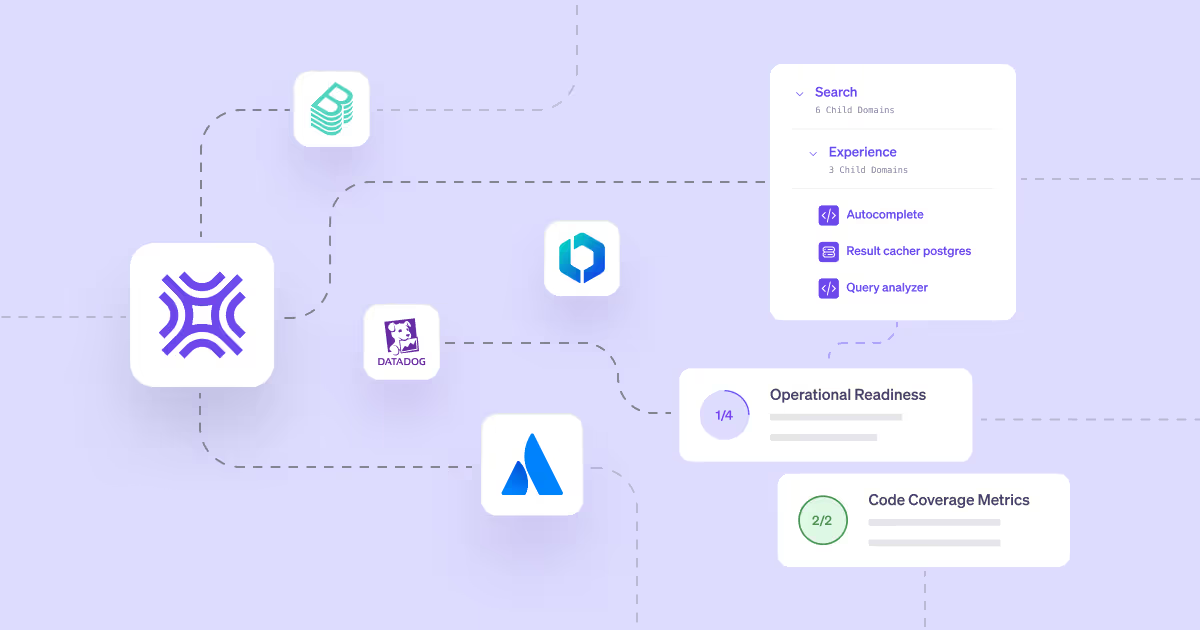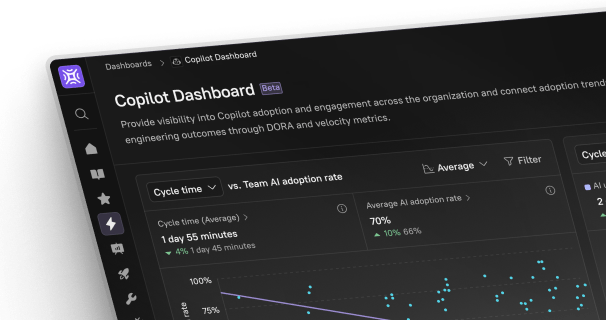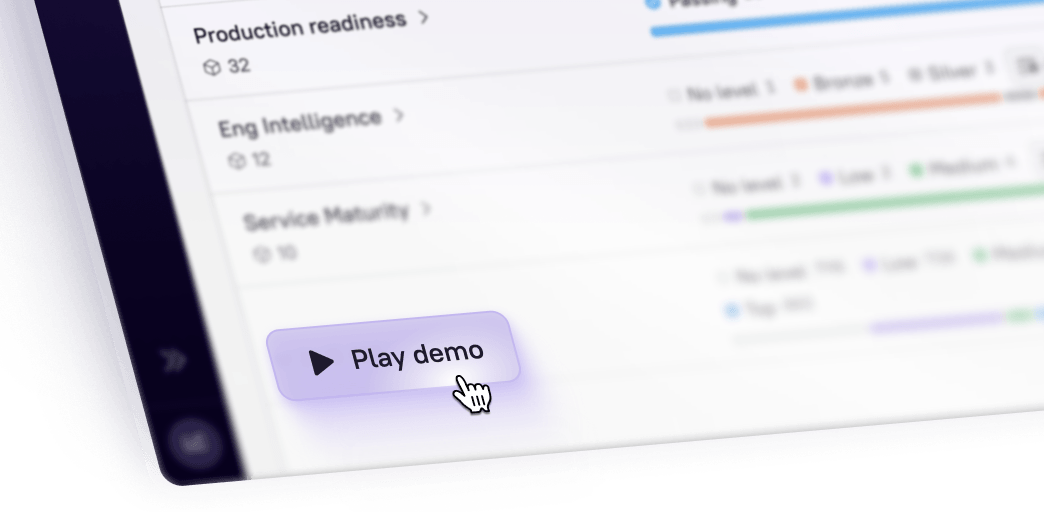Since it was open sourced in 2020 Backstage.io—a platform for building internal developer portals (IDPs) initially created for internal use at Spotify—has generated significant buzz in the engineering community. While Backstage wasn’t the first IDP, it did much to raise awareness for the entire space, bolstering business for commercial entities that offered out of the box alternatives. One such entity is OpsLevel. OpsLevel formed in 2018 to tackle a growing need for service catalogs, but has since evolved to offer more traditional IDP capabilities like scoring and scaffolding. In this blog we’ll cover:
How OpsLevel compares to Backstage
The pros and cons of each according to your goals
Why you might consider a third alternative
While the developer portal and developer platform space is starting to get crowded, and confusing—with some established players like DataDog or Atlassian offering catalogs or pared down versions of an IDP as a feature rater than a standalone product—it wouldn’t be unusual for a team to compare OpsLevel and Backstage directly. The two have many similarities, but also differ:
At a glance, Backstage and OpsLevel:
Both provide ways to centralize service information
Both offer a mechanism to score services against certain standards of development
But OpsLevel requires fewer resources to deploy, with more out of the box functionality
While Backstage offers a greater level of flexibility with a robust plugin framework and near limitless optionality for building the portal that best fits your team’s needs
OpsLevel: The Developer Platform for High Performing Teams
OpsLevel is a prescriptive internal developer portal that enables engineering teams to catalog, measure, and scaffold software according to best practice. They boast the ability to build your developer portal in minutes rather than months, which cannot be said about Backstage given the need to architect every component from scratch.
OpsLevel is an option for teams that are primarily struggling with service visibility, only need to lean on a small set of required webhooks. It’s not best for teams that are rounding the corner to greater software and standards complexity, including those with certain data portability and hosting requirements.
Features & Benefits of OpsLevel
Easy to setup
Catalog all your microservices, systems, teams, and tools
Set standards of development and maintenance
Automate checks for alignment to standards
Execute actions from the platform
Checks some boxes for service catalogs
Detect services across your stack and add to your catalog
Add service descriptions with AI
Show dependencies between services
Enables standards tracking
Add rules to different tiers for security and reliability use cases
Use a single rubric for all use cases (can’t customize rubrics for different use cases)
Create a one-off campaign to drive change (can’t be re-used)
Developer self-service and output optimization
Centralize view of tools supported by web-hooks
Create templates that can be used when deploying software
What Are The Drawbacks of OpsLevel?
There are a few things to consider when evaluating OpsLevel, some of which are tied to your org size, maturity, and complexity.
Inaccurate ownership suggestions
Ownership is the foundation of a successful IDP, but OpsLevel suggests ownership based on a simple recent git contributor heuristic. Our own testing shows this method is less than 50% accurate, leading to mis-assigned owners and services without clear accountability. Cortex uses an AI model with over 90% accuracy and can automatically handle orphaned services.
Reliance on webhooks and stale data
OpsLevel does not have a native Software Engineering Intelligence (SEI) platform. While they claim to support engineering metrics, this requires you to build your own custom pages and compute metrics yourself. Cortex provides a full suite of SEI capabilities out of the box, including DORA, velocity, and incident metrics.
No engineering intelligence
OpsLevel requires you to manually add groups and update when people join, leave, or move teams.
Scorecard evaluations aren’t automated which means checks must be manually created and run.
Basic, single-step automation
OpsLevel’s “Actions” are limited to single steps, meaning they cannot encode complex logic or orchestrate workflows across multiple systems. Cortex provides a full workflow engine with conditional branching and custom scripting to automate complex, multi-step developer actions.
Inflexible Scorecarding
While users can create different Scorecard types, they utilize a “global rubric” which means only one rule format is supported.
Scorecard rules don’t support regex, limiting the complexity of checks you can run.
Spotify Backstage: An Open Platform for Building Developer Portals
Since it was open-sourced in 2020, Backstage has been one of the most talked-about names in the IDP space. However, in the years since, the initial excitement of a "build-your-own" portal has been met with the practical reality of its total cost of ownership. The "open" framework that is so enticing to developers carries hefty time, skill, and cost considerations, and many organizations who have tried Backstage have begun to realize the previously obscured cost of building and maintaining a fully custom internal developer portal. We’ve seen anywhere from 3-15 FTEs staffed on Backstage projects, a significant and ongoing investment.
Features & Benefits of Backstage
Opensource
Backstage is an opensource project which means it’s an open framework for development, and can be continuously improved by the community that supports it—not just those at Spotify.
Opensource also means no licensing costs
Large community
Connect, share, and get help from users all over the world
Great documentation
Backstage may require enormous effort to set up and maintain but you’ll have no shortage of documentation on how to begin the process
Portable
No fear of vendor-lock-in
Supports techdocs or docs-as-code
The well-known reality of running Backstage
A full-time software project, not a platform: The top complaint from Backstage-curious teams is the exceptional effort required to stand it up and maintain it. It is not an extension of existing efforts; it's a completely new architecture that requires a dedicated team of engineers with frontend, React, and Typescript skills just to build and maintain the core functionality.
The 9% adoption problem: A simple catalog is not enough to drive change. While Spotify’s internal adoption is high, their own VP of Engineering has shared that adoption at external organizations averages about 10%. This is because Backstage lacks the built-in engineering intelligence and initiative-tracking that gives leaders and other stakeholders a compelling reason to use the portal.
A foundation of stale data: A successful IDP must be built on a foundation of trusted, always-up-to-date data, especially service ownership. Backstage does not solve this fundamental problem out of the box, meaning its data can quickly become stale and untrustworthy. An IDP that can't be trusted can't be used to progress critical engineering initiatives.
Cortex: The internal developer portal that delivers value on day one
There’s an ocean between the opinionated nature of OpsLevel and a fully open framework like Backstage. That’s why organizations of all sizes are moving to Cortex. We provide the out-of-the-box capabilities of a turnkey solution with the flexibility you need, allowing you to drive results without the overhead.
Solve the TCO problem: The Total Cost of Ownership (TCO) for a developer portal goes beyond initial licensing. It includes the significant, ongoing engineering investment required to build and maintain the platform, the business impact of low adoption, and the risks that come with building on a foundation of untrustworthy data. For teams already invested in Backstage, our Backstage Migration Helper allows you to preserve the work you've already done while eliminating this maintenance burden. For new teams, you can get up and running in minutes, not months.
Solve the adoption problem: Cortex was the first IDP to offer Scorecards and now leads the market with Engineering Intelligence. This provides value for the entire organization—from developers who get clear guidance, to leaders who get the visibility they need—driving adoption far beyond a simple catalog.
Solve the fundamentals problem: With 50+ out-of-the-box integrations and automated ownership syncing from your identity provider, Cortex ensures your catalog is always up-to-date and can be trusted as the single source of truth for driving critical initiatives like production readiness, security audits, and migrations.
If you’re evaluating Backstage or OpsLevel we hope this guide has been helpful (and we hope you’ll consider a third alternative in Cortex). If you’re ready to dig in a little more, check out our self-guided tour, or connect with us to book a fully custom demo today!





